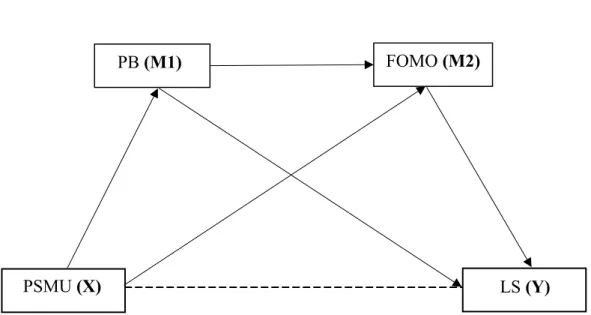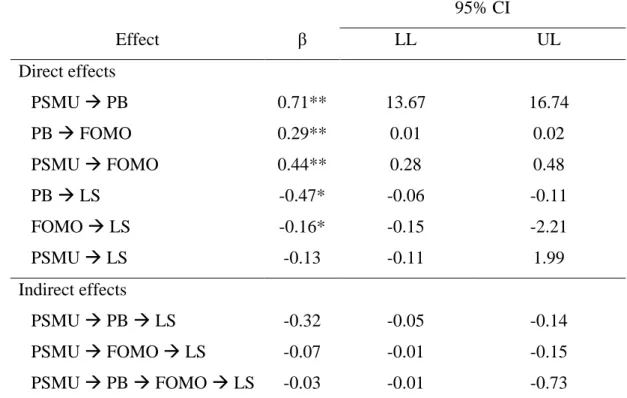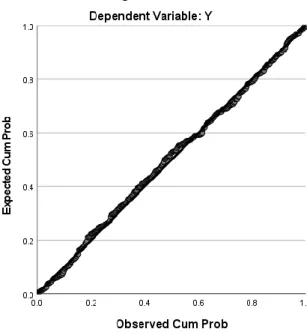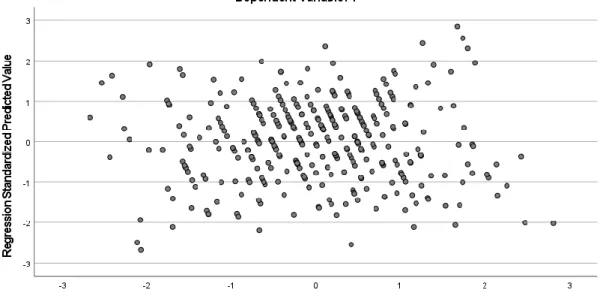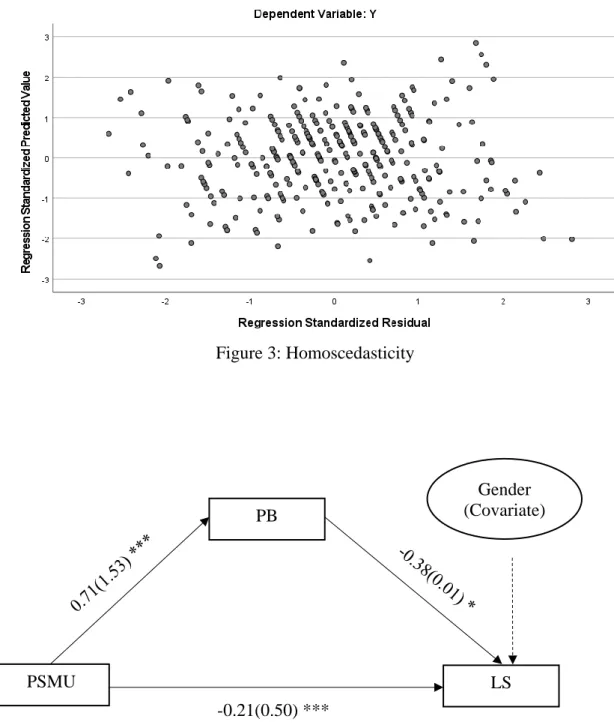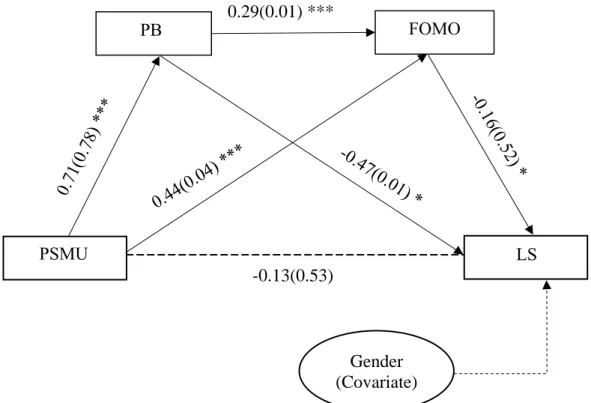PHUBBING AND THE FEAR OF MISSING AS A MEDIATOR BETWEEN PROBLEMATIC USE OF SOCIAL MEDIA AND LIFE. Recent studies have shown certain risk indicators for the reduced life satisfaction of young adults due to excessive social media use. The aim of the present study was to determine whether problematic social media use predicts life satisfaction among young adults.
Findings indicated that (a) problematic social media use was associated with lower levels of life satisfaction, (b) offending behavior and fear of missing out both mediated the relationship between problematic social media use and life satisfaction, and ( c) withdrawal behavior and fear of loss sequentially mediated the relationship between problematic social media use and life satisfaction. Keywords: Problematic social media use, offending, fear of loss, life satisfaction, serial mediation analysis.
Introduction
- Overview
- Statement of the Problem
- Relevant Literature
- Phubbing
- Problematic Social Media Use
- Fear of Missing Out
- Life Satisfaction
- Current Study
- Aim
- Hypotheses
Phubbing occurs when someone turns away from a real-world interaction/conversation to use their smartphone (Erzen et al., 2021). Phubbing has important similarities to addictive online activities and to cognitive and behavioral factors influencing impulsive internet activity (Guazzini et al., 2019). Since phubbing is a common phenomenon, it requires a thorough understanding of the psychological consequences and effects it has on interpersonal interactions (Knausenberger et al., 2022).
Phubbing is a widespread phenomenon among young adults and affects the effectiveness of interpersonal communication (Correa-Rojas et al., 2022). In contrast, conscientiousness, extraversion and agreeableness were not identified as important predictors of phubbing activity (T'ng et al., 2018). Phubbing negatively impacts social and relational well-being (Sanjeev et al., 2018) and can potentially lead one to feel depressed and anxious.
Men's Internet and gaming addiction, conversely, had a greater impact on their BP than women (Karadağ et al., 2015). Different terminologies have been used to define problematic social media use (Huang, 2022), which has emerged as a behavioral addiction to social media use (Shensa et al., 2017). Young adults are particularly drawn to SNS, although research has found that regular users of these platforms can have harmful psychological effects (Oberst et al., 2017).
FOMO is a phenomenon related to technology-enabled social media that also occurs in physical or real-life situations (Tandon et al., 2021). Individuals may experience FOMO when using social media because they are curious about how much other individuals are fascinated by their SMS and posts (Alutaybi et al., 2019). This suggests that some individuals are more likely than others to experience FOMO (Milyavskaya et al., 2018).
Methods
Participants and Design
Measures
- Demographic Information Sheet
- Social Media Use Questionnaire
- Generic Phubbing Scale
- Fear of Missing Out Scale
- Satisfaction with Life Scale
With a Cronbach's alpha of 0.86, the SMUQ was shown to have good psychometric properties in a study to determine whether problematic Internet use was associated with psychological well-being (Fernandes et al. examined the direct and indirect associations with problematic social media use and emotional characteristics ). intelligence and showed a Cronbach's alpha of 0.84. In a study examining potential risk and protective variables of PB and mobile phone addiction among Chinese college students, GSP showed good psychometric properties with a Cronbach's alpha of 0.86 (Lai et al., 2022). In their study of the relationship between phubbing and life satisfaction among adults in Turkey during the pandemic (Polat & Karasu, 2022), Cronbach's alpha of 0.91 was demonstrated.
FoMOs is a quick and simple assessment that accurately measures FOMO in people who exhibit low, moderate, and high levels of this construct (Przybylski et al., 2013). FoMO showed strong psychometric properties with a Cronbach's alpha of 0.81 when Coskun & Muslu (2019) examined smartphone overuse and FOMO level about social media advancement among youth. In a study by Alt & Boniel-Nissim (2018) that investigated the associations between personality characteristics in adults and problematic social media use, Cronbach's alpha was 0.80.
The SWLS was specifically designed to measure overall life satisfaction among the many aspects of subjective well-being; it does not take into account related concepts such as positive emotions or loneliness (Diener et al., 1985). Responses to all items are summed, with a higher score indicating higher levels of life satisfaction. In a study examining the relationships between social media addiction, self-esteem, and life satisfaction, SWLS demonstrated strong psychometric properties, with a Cronbach's alpha of 0.85 (Hawi & Samaha, 2017).
According to a study by Bachnio (2016), which examined the relationship between Facebook use, self-esteem and life satisfaction, the SWLS showed a Cronbach's alpha of 0.81.
Data Analytic Plan
Participants rate each item (e.g., “If I could live my life over again, I would change almost nothing”) on a seven-point scale ranging from 1 (Strongly disagree) to 7 (Strongly agree ).
Results
- Sample Descriptive Statistics
- Descriptive Statistics and Testing Model Assumptions
- Correlation Analysis
- The Mediating Role of Phubbing Behaviour
- The Mediating Role of Fear of Missing Out
- Examining the Multiple Mediation Model
No possible outliers were identified in the study based on Mahalanobis distance values and no influence. The normal probability plot of standardized residuals (Appendix G), as well as values for skewness and kurtosis showed that all variables were normally distributed, as Byrne (2016) suggested that multivariate normality of data can be inferred if the skewness value is between -2 and +2, and the kurtosis value is between -7 and +7. Analysis of collinearity statistics indicated that multicollinearity was not a concern, as all VIFs were significantly less than 10 (PSMU, VIF = 2.43; PB, VIF = 2.25; . FOMO, VIF = 1.85).
The Durbin-Watson statistic showed that the values are independent of residuals, as the observed value was close to 2 (Durbin-Watson value = 2.01). The variance of the residuals is constant, as the scatter plot of the predicted value of the standardized residuals versus the standardized predicted value showed that the data met the assumptions of linearity and homoscedasticity (Appendix G). The negative direct association between problematic social media use and life satisfaction remains significant (β = -0.21, t = -2.82, p), indicating that young adults who engaged in more problematic social media use and phubbing behaviors, are more likely to have low levels of social media use and phubbing behavior. of life satisfaction (Appendix G).
Similarly, the same tool was used to test the mediating effect of fear of delay between problematic social media use and life satisfaction. In order to test the sequential mediating effect of phubbing behavior and fear of delay, the 6 macro PROCESS model (Hayes, 2013) was used. All paths were significant after controlling for gender, as shown in Table 5 and Figure 6 , except for the remaining direct path of problematic social media use → life satisfaction (β = −0.13, p = 0.0778).
This multiple mediation model accounted for a significant amount of variance in young adults' life satisfaction (R2 = 0.37).
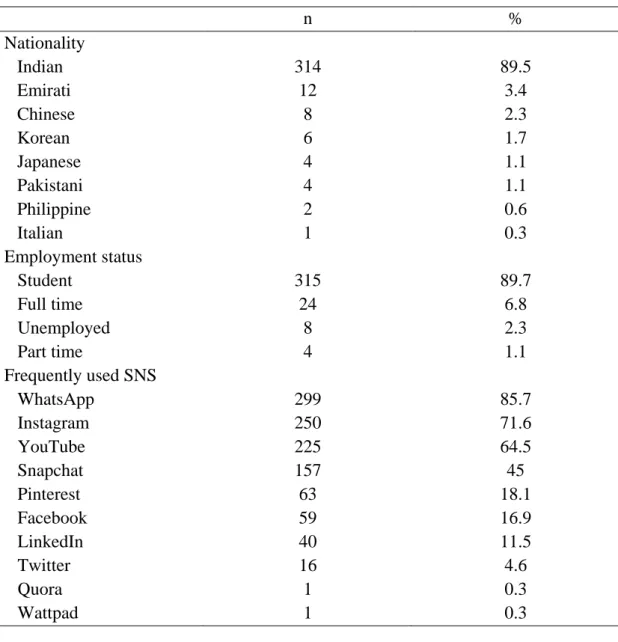
Discussion
Problematic Social Media Use and Life Satisfaction
The Mediating Role of Phubbing Behaviour
Thus, our findings close this knowledge gap on the influence of coping behavior on the escalation of negative impacts of problematic social media use.
The Mediating Role of Fear of Missing Out
As a result of the comparison processes that result from this belief - between "I" and "others" - people experience less life satisfaction (Uram & Skalski, 2022). It should be emphasized that when a person's dependence on digital worlds decreases as they satisfy their fundamental need for social connections, their degree of FOMO decreases and their level of life satisfaction improves (Deniz, 2021). Finally, the present study is the first to demonstrate how FOMO negatively affects young adults' life satisfaction by acting as a mediator between problematic social media use and life satisfaction.
This study goes far beyond previous research by explaining why young people who use social media in problematic ways are more likely to be less satisfied with their lives.
The Multiple Mediation Model
Findings indicated that problematic social media use affects young adults' life satisfaction through phubbing and FOMO behaviors through a sequential mediation mechanism. This integrated sequential mediation model adds to the body of knowledge and provides a more detailed explanation of the relationship between problematic social media use and life satisfaction in young adults.
Limitations
Suggestions for Future Research
With the biopsychosocial model providing insights into phubbing related to addiction symptoms, future research may focus more on the relationship between Internet addiction and phubbing behavior. To draw valid conclusions from future studies, it is important to recruit an equal representation of men and women across nations. In terms of applications, the findings may aid in the development of effective preventive measures and treatments intended to reduce young adults' use of social media and phubbing.
For example, treatments aimed at reducing the likelihood of young adults' problematic social media use and offending behavior should emphasize improving offline contacts. Phubbing acts as a potential risk factor and this study may help develop interventions to reduce this behavior. For example, setting where youth are involved, such as universities, organizations, etc., can implement a "cell phone free zone" to increase communication between people.
To reduce the fear of missing out in cyberspace, people should also concentrate more on programs designed to address ideas associated with fear of missing out and learn more about the harmful consequences of fear of missing out.
Conclusion
The findings showed a negative relationship between problematic social media use and young adults' satisfaction with their lives. Studies on the relationship between problematic social media use and young adults' life satisfaction have revealed that phubbing behavior and fear of missing out can both independently mediate this relationship. Moreover, the association between problematic social media use and young adults' life satisfaction may be sequentially mediated by phubbing behavior and fear of missing out.
Extraversion, neuroticism, attachment style and fear of missing out as predictors of social media use and addiction. The phubbing phenomenon: A cross-sectional study of the relationships between social media addiction, fear of missing out, personality traits, and phubbing behavior. Problematic use of social media and mental health (depression, anxiety, and insomnia) among Lebanese adults: any mediating effect of stress.
The fear of missing out and its connection to social media and problematic internet use among Filipinos. The Social Media Feast: Fear of Missing Out (Fomo), Social Media Intensity, Connection, and Well-Being. Characteristic emotional intelligence and problematic social media use among adults: the mediating role of motives for social media use.
Fear of missing out (fomo) among social media users: a systematic literature review, synthesis, and framework for future research. Social media induced fear of missing out (fomo) and throat: Behavioral, relational, and psychological outcomes. The association between problematic social media use and life satisfaction is mediated by fearful behavior and fear of missing out.
